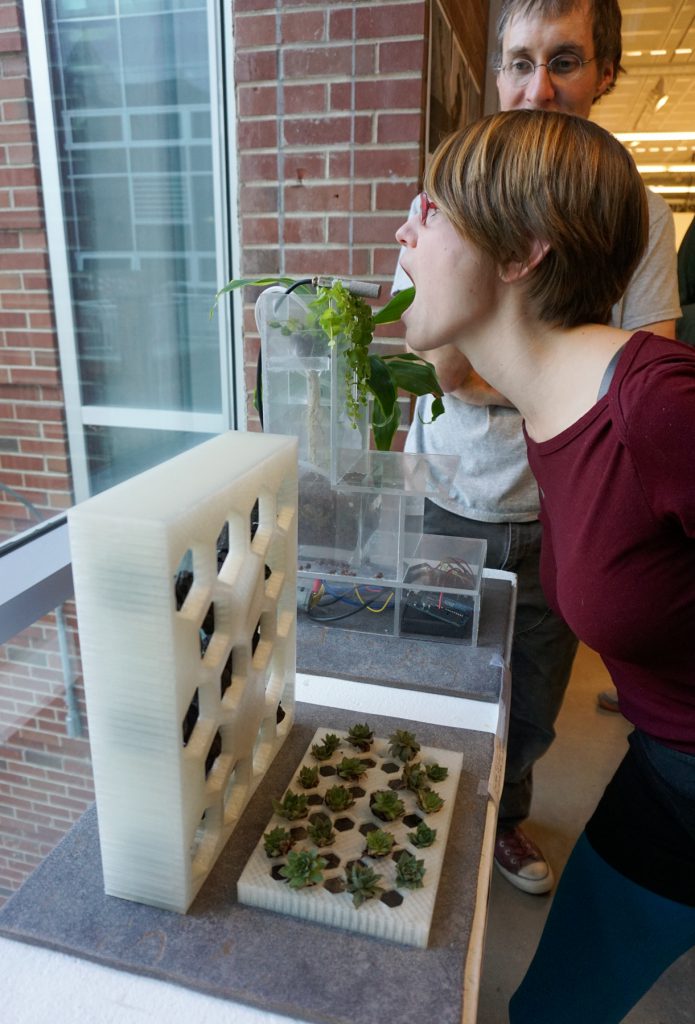 The biophilic design model, Living Exoskeleton Façade, draws from the silica-based nano structures within the cell walls of diatoms to create a new type of vertical greening system. The hexagonal structure of diatom – Coscinodiscus wailesii – is imitated to create a living exoskeleton that provides a rigid, protective support for plants and building façade. The living exoskeleton would be placed overtop a vegetative mat living wall system on the exterior façade of a building. A modular prototype was 3D printed for the BioPresence Exhibition. Rock media was substituted for typical layers used by vegetative mat living walls, and a clear print filament was used to capture its bone-like structure.
The biophilic design model, Living Exoskeleton Façade, draws from the silica-based nano structures within the cell walls of diatoms to create a new type of vertical greening system. The hexagonal structure of diatom – Coscinodiscus wailesii – is imitated to create a living exoskeleton that provides a rigid, protective support for plants and building façade. The living exoskeleton would be placed overtop a vegetative mat living wall system on the exterior façade of a building. A modular prototype was 3D printed for the BioPresence Exhibition. Rock media was substituted for typical layers used by vegetative mat living walls, and a clear print filament was used to capture its bone-like structure.
The model questions the basic premise of architecture – to provide a functional and comfortable environment for humans – that has excluded the existence of the outside, natural world in the built environment. The walls built up around us serve to protect the inhabitants within them, not create harmony with the surrounding natural landscape. As urbanization continues across the globe it is extremely important that society realizes the potential to integrate our living spaces with our local ecosystem. The biophilic design model explores urban vertical greening systems to deconstruct this growing dichotomy between humans and nature encouraged by contemporary development.


